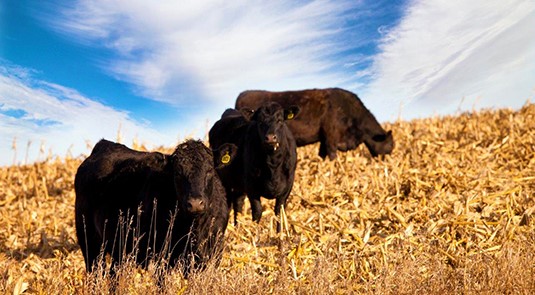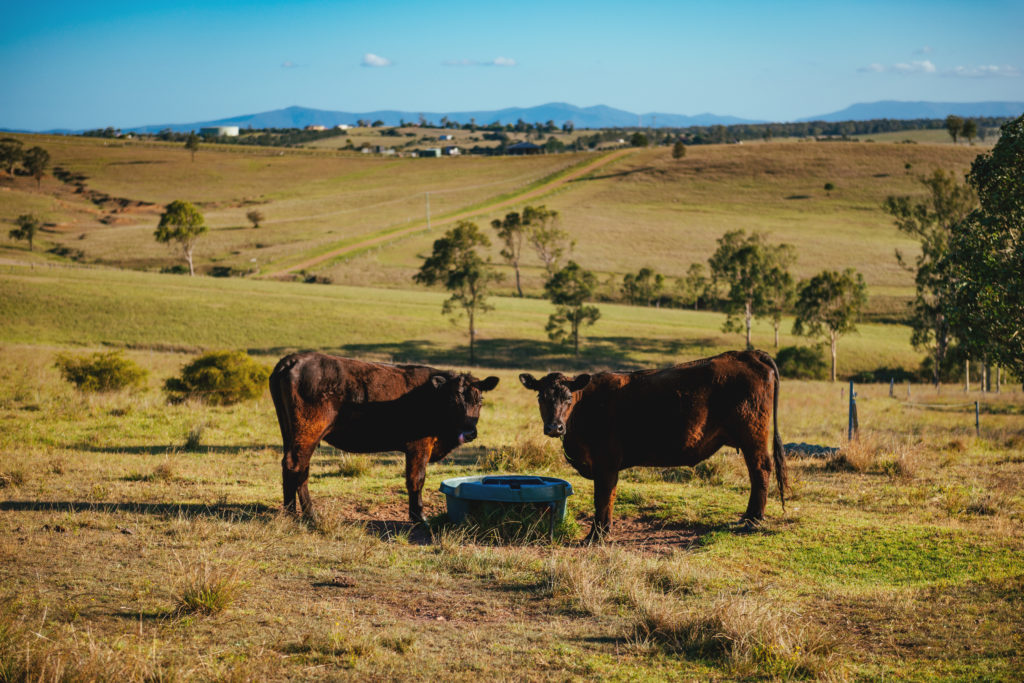
Given reproductive performance is one of the main profit drivers in any beef breeding business, it is crucial to ensure heifers not only conceive ‘on time’, but also fall back in calf (reconceive) within a short window following the birth of their first calf. This is a significant challenge for many producers given first calf heifers have the lowest fertility of any age group (they are still growing AND often lose weight whilst lactating and rearing a calf) and given the unpredictable nature of Australia’s weather patterns. Conception rates are therefore very much driven by pasture management and herd nutrition according to varying seasonal conditions.
It is also worth remembering that your heifers should contain the best (ie the latest) genetics in your herd which is worth capitalising on.
Body Condition Score
Body Condition Score (BSC) at joining has the greatest effect on heifer fertility. Body condition is a more reliable indicator of a cow’s reproductive performance than weight and refers to estimated fat reserves on certain body parts. As a rule of thumb, one BSC equates to 60-80kg liveweight (depending on the breed and size of the cattle) and it can easily take 10 weeks+ to gain one BCS if cattle aren’t gaining in excess of 0.6-0.8kg/hd/day.

The ideal BSC is 3.5 (on a scale of 1-5) for Bos Indicus and Bos Taurus heifers, particularly if they are to reconceive within three cycles post calving.
Critical Mating Weight
The equivalent critical mating weight (CMW) for Bos indicus cattle is approx. 320-340kg and 280-300kg for British breeds. This is because Bos indicus heifers tend to reach puberty at heavier weights and at a later age than their Bos taurus counterparts.
Post Weaning Management
Nutrition during weaning and post weaning is important economically given it has a direct effect on short- and long-term growth, overall health, meat quality (culls) and importantly, the reproductive performance of replacement heifers. Heifers should be given access to the best pasture, run separately and at conservative stocking rates. Healthy heifers on a rising plane of nutrition post-weaning, growing at approximately 0.6kg/hd/day should reach target joining rates.
Early weaning calves on maiden heifers may be warranted, particularly during poorer seasonal conditions or where pasture quality and quality is limiting.
Pasture Management
Pastures that contain a high green component and good bulk (see diagram) should enable heifers to grow at the desired rate of more than 0.6 kg/hd/day.
If heifers are forced to graze poor to moderate pastures with high levels of Neutral Detergent Fibre (NDF), livestock supplements will be essential to provide the necessary energy, protein and minerals to help achieve production targets. This is because as forage NDF increases, the amount of feed an animal is able to eat decreases.
Spike Feeding Heifers
Spike feeding is most commonly applied to maiden heifers to help them rebound from the negative production period their first calf often places them in. The goal of spike feeding is to add one body condition score in approximately 60 days by supplementing stock with feeds high in energy and protein.
Heifers will need to consume between:6-10 grams of molasses-based spike feed per kilogram of live weight per head per day, or3-5 grams of protein meal-based spike feed per kilogram of live weight per head per day.
Molasses based supplements should contain both urea and protein meal and be fed daily or every second day to ensure consistent and efficient utilisation. Molafos Grower and Molafos Vitameal are both highly palatable molasses-based supplements which are highly fortified with true protein (UDP) making them ideal for young growing animals. Protein meals or fuzzy (whole) cotton seed can be fed twice weekly with little negative effect on efficiency. See the Spike Feeding Heifers and Breeders Tech Note for more information.
Containment Feeding
Containment feeding, otherwise known as confinement or opportune feeding, is becoming increasingly popular as a tool for reproductive management, particularly during extended dry periods. As livestock are fed a full or complete ration with containment feeding, it is essential that the ration is fully balanced with the necessary protein, energy, minerals and vitamins to ensure production targets are met. The video Containment Feeding Livestock with Molafos explains this system further.
The Molafos Solution
Molafos 15, Molafos 15S and Molafos 20 are ideally suited to supplying the energy and inorganic protein required by heifers to help utilize poorer pastures. Being molasses-based, these supplements, with varying levels of sourness (S) and protein (15 and 20%) are readily accepted by young stock, ensuring sufficient supplement intakes to achieve critical production targets.

Molafos supplements are easy to feed to stock by pouring or pumping the product directly from an IBC on the back of a ute into a tub on the ground. Alternatively, they can be incorporated into a ration using an on-farm mixer wagon.
For the best results, producers should start supplementing with Molafos before a period of negative production starts
For more information please contact either your local reseller or GLF on 1800 333 010 and help ensure your heifers realise their potential.
References
Future Beef Heifer Management in Northern Beef Herds
NSW DPI Primefact 626 Selecting and Managing Beef Heifers




